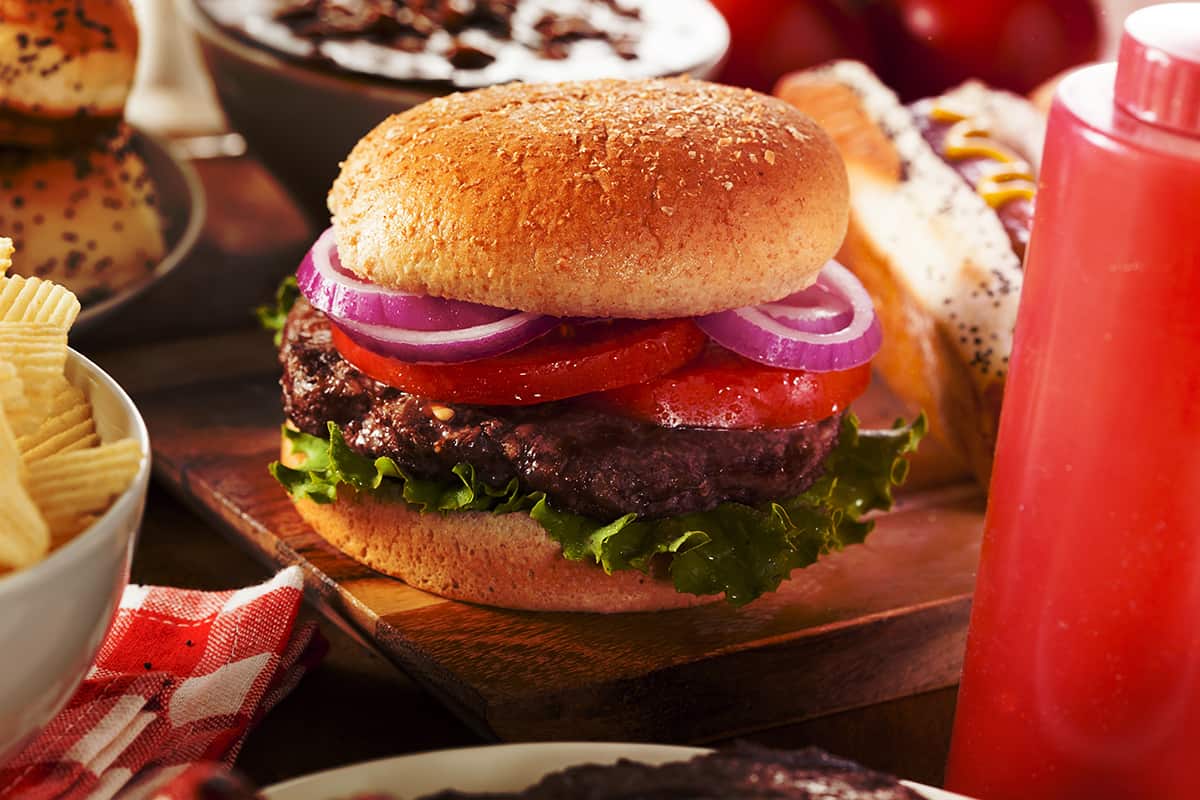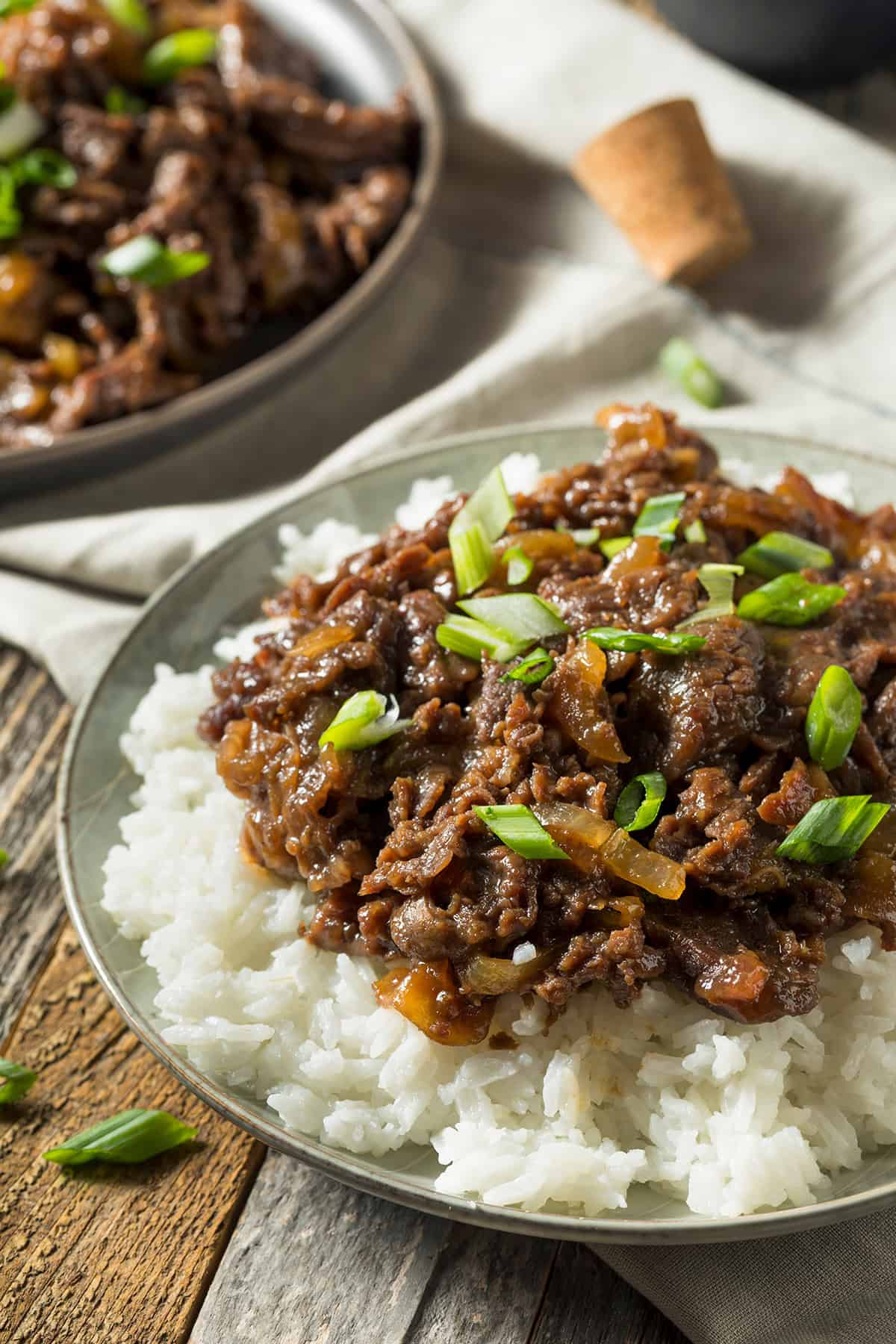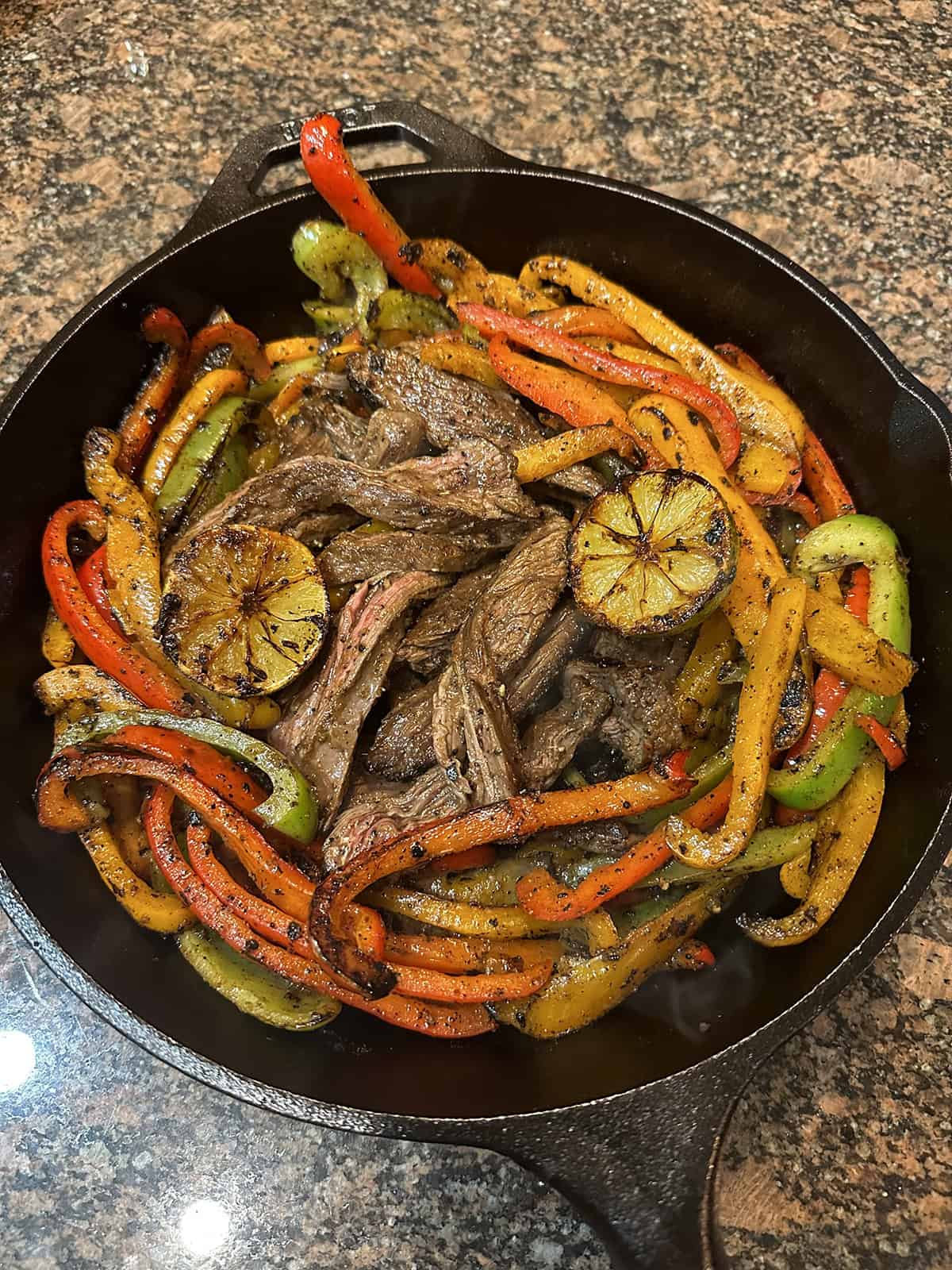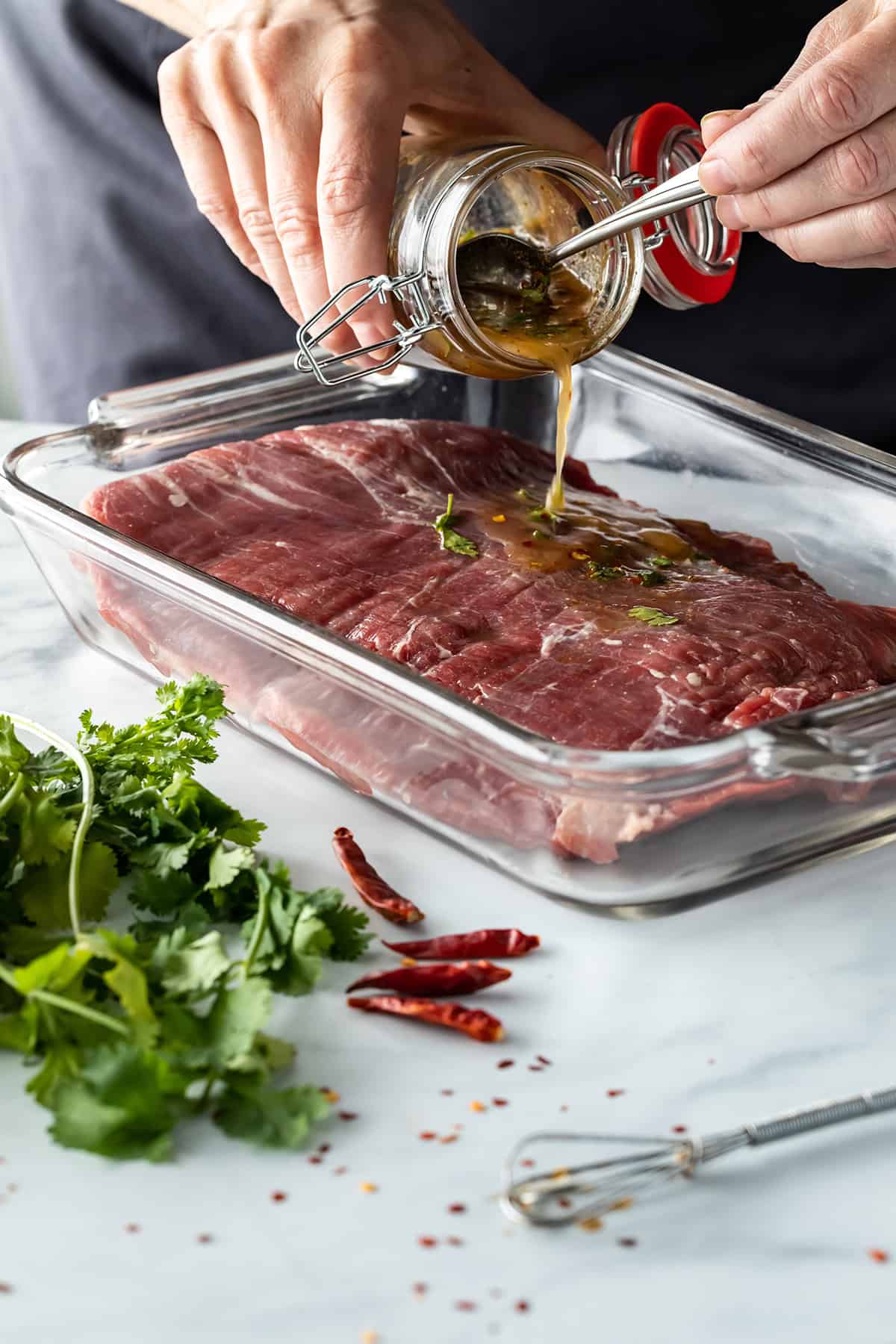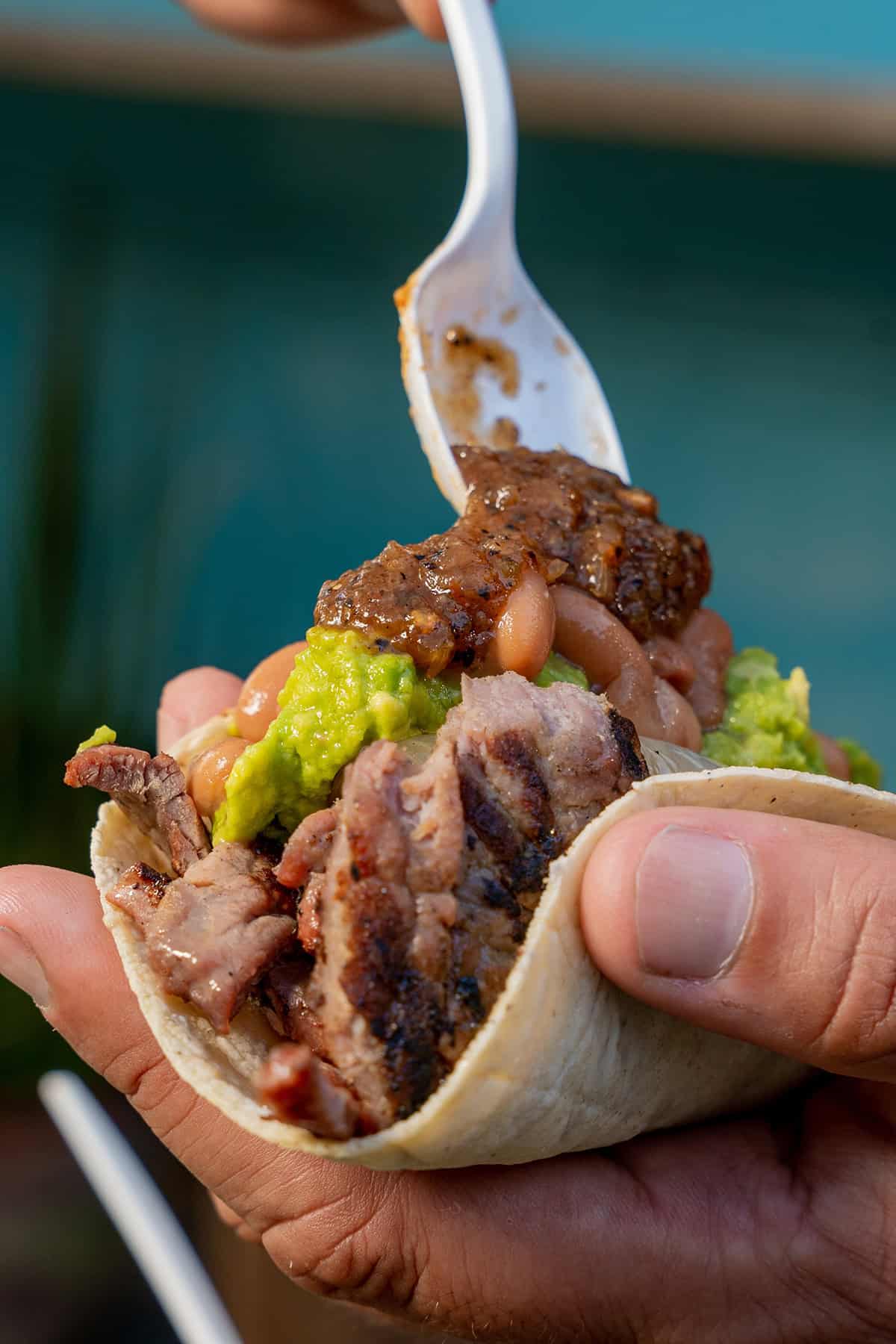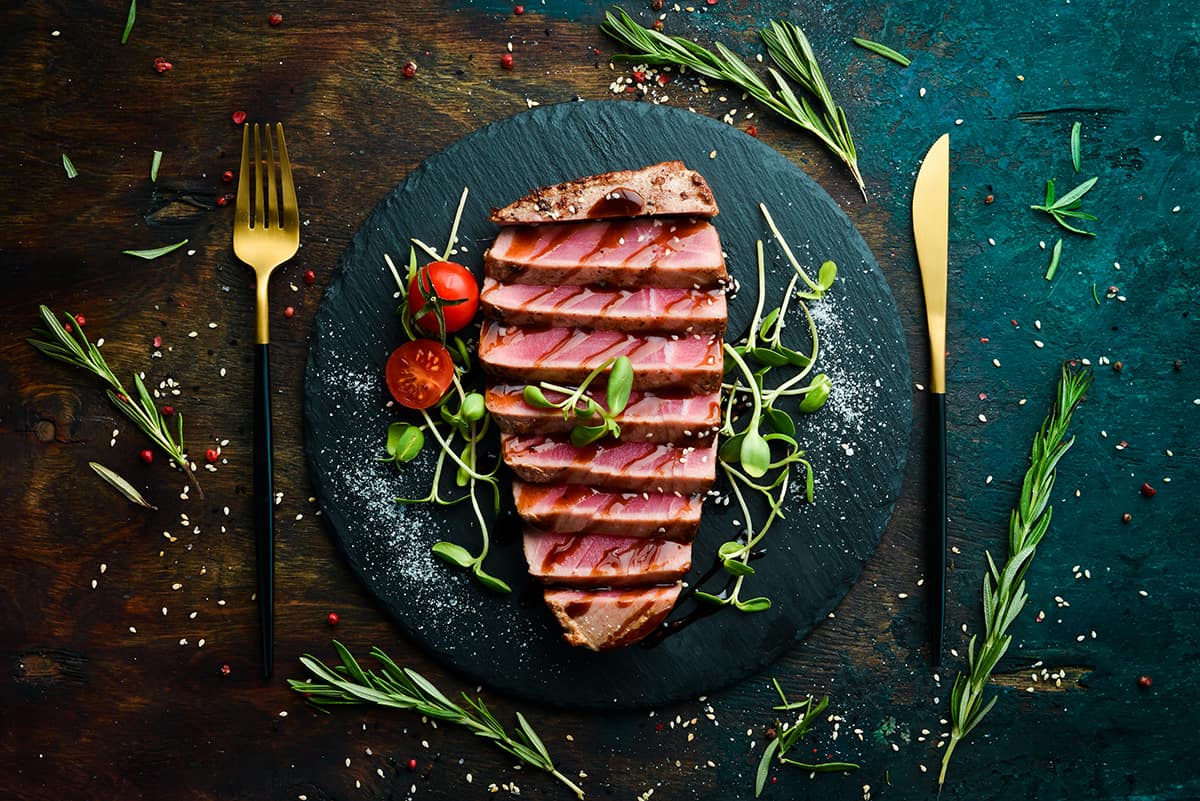Grilling the perfect hamburger is both an art and a science. One of the key factors that contribute to a juicy, delicious burger is cooking it to the right temperature.
This Hamburger Temperature Guide, complete with a Temperature Chart, will help you cook your burgers to perfection every time, whether you prefer them rare, medium-rare, medium, medium-well, or well-done. Say goodbye to guesswork and hello to flavorful, juicy hamburgers.
The Importance of Temperature
Cooking hamburgers to the correct internal temperature is crucial for both taste and safety. Achieving the desired doneness not only ensures a burger that is juicy and flavorful but also one that is safe to eat. Consuming undercooked ground beef can lead to foodborne illnesses caused by harmful bacteria, such as E. coli and Salmonella.
Different types of meat, such as beef, pork, or poultry, have varying safe internal temperature guidelines. This guide focuses on hamburgers made from ground beef, which is the most common type of hamburger.
Hamburger Temperature Chart
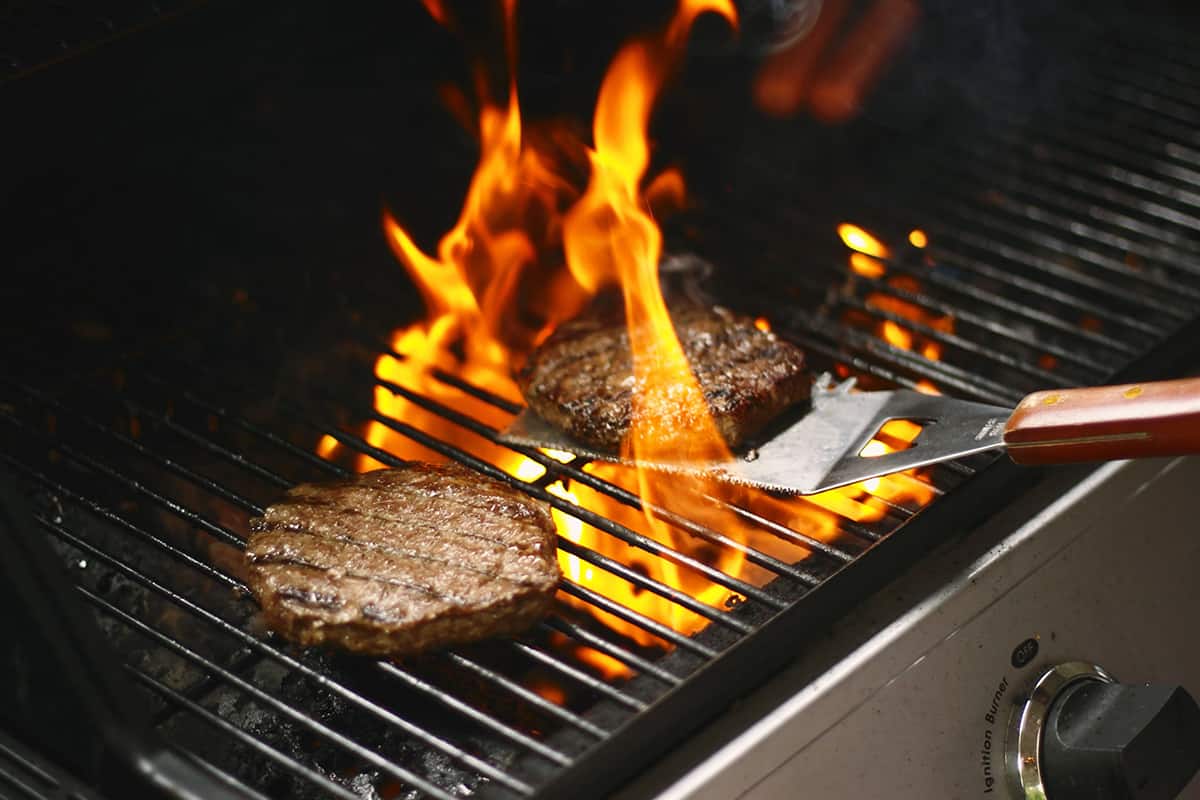
Here’s a handy temperature chart for your reference:
| Doneness Level | Internal Temperature |
| Rare | 120°F – 125°F (49°C – 51°C) |
| Medium-rare | 130°F – 135°F (54°C – 57°C) |
| Medium | 140°F – 145°F (60°C – 63°C) |
| Medium-well | 150°F – 155°F (65°C – 68°C) |
| Well-done | 160°F – 165°F (71°C – 74°C) |
Keep in mind that the USDA recommends cooking ground beef to a minimum internal temperature of 160°F (71°C) to ensure food safety. However, if you prefer your burgers with a different level of doneness, you can use the above chart as a guide.
Understanding Doneness Levels
Burger doneness levels refer to the internal temperature and texture of cooked hamburger patties. The different levels of doneness range from rare to well-done, each characterized by specific temperature ranges and visual and textural qualities. Here is a breakdown of each doneness level:
1. Rare
A rare hamburger features a seared outer crust, while the center remains cool and deep red. The texture is soft, and the meat is very juicy, with the majority of the fat remaining unrendered.
2. Medium-rare
A medium-rare burger has a well-seared outer crust, while the interior is warm and has a pinkish-red center. The texture is tender and juicy, with a good balance between the rendered fat and the unrendered fat content.
3. Medium
A medium-cooked hamburger has a nicely seared crust, while the interior is uniformly warm and mostly pink. The texture is firmer than medium-rare, yet still tender and moist.
4. Medium-well
The exterior of a medium-well hamburger has a nicely seared crust, and the interior is mostly gray-brown with a slight hint of pink in the center. The texture is firmer, and the burger is less juicy than a medium-cooked one.
5. Well-done
The outside is well-seared, and the inside is uniformly gray-brown with no pink. The texture is the firmest among all doneness levels, and the burger tends to be drier and less juicy. Some might refer to this as a “hockey puck.”
Using a Meat Thermometer
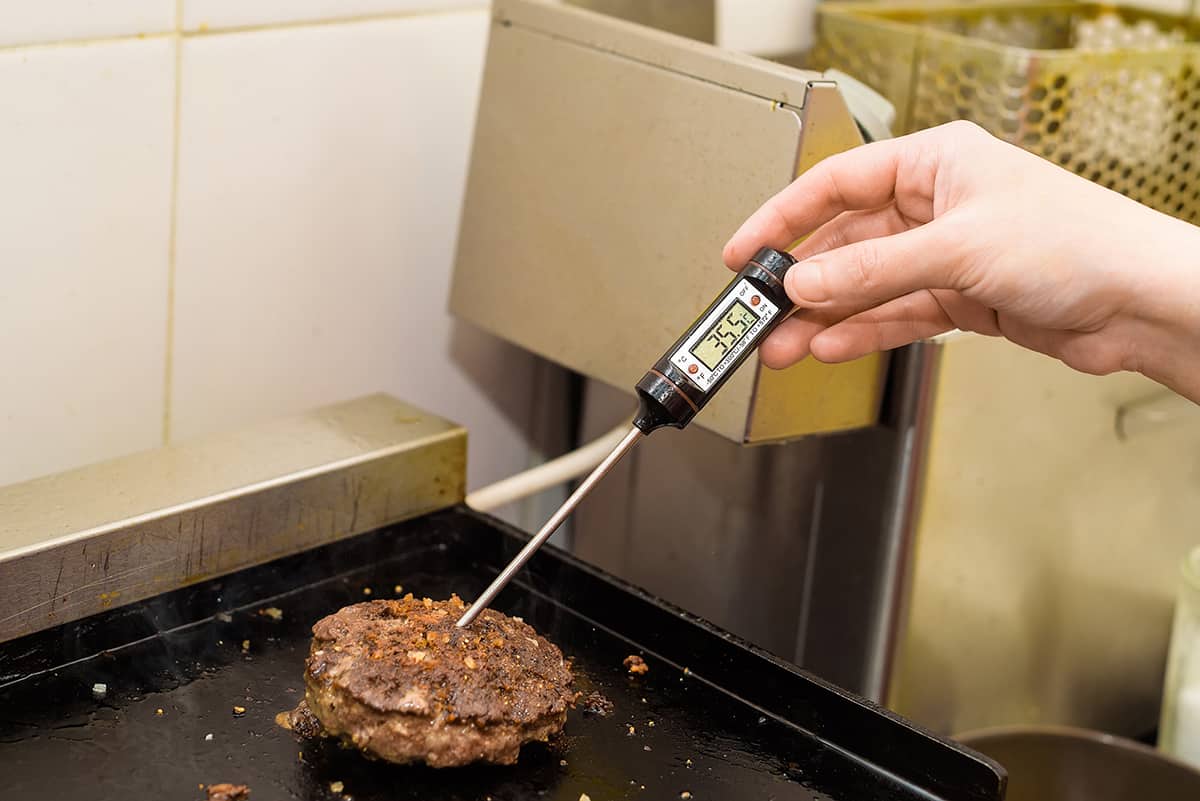
To accurately measure the internal temperature of your hamburger, you’ll need a reliable meat thermometer. Instant-read digital thermometers are the best choice for quick and precise readings. Here’s how to properly use a meat thermometer when cooking hamburgers:
- Preheat your grill or cooking surface to the desired temperature.
- Shape your hamburger patties to an even thickness, ideally around ¾ to 1 inch thick.
- Cook the hamburgers, flipping them occasionally to ensure even cooking.
When you’re nearing the desired cook time, insert the meat thermometer into the center of the patty from the side, ensuring it does not touch the cooking surface or any bone.
Check the temperature reading, and remove the hamburgers from the heat when they reach the desired internal temperature according to the chart above.
Allow the burgers to rest for a few minutes before serving to allow the juices to redistribute.
Tips for Cooking the Perfect Hamburger
Now that you have a better understanding of hamburger temperatures, here are some additional tips to help you cook the perfect burger:
- Choose high-quality ground beef—Opt for ground beef with a fat content of 15-20%. The fat in the meat contributes to a juicier, more flavorful burger.
- Season generously—Season your ground beef with salt and pepper, or experiment with other seasonings and spices to suit your taste preferences. Make sure to season both sides of the patty before cooking.
- Keep the patties cold—Shape the hamburger patties and then refrigerate them for at least 30 minutes before cooking. This helps the fat stay solid, preventing the burgers from falling apart during cooking.
- Avoid over-mixing—When combining ground beef with seasonings, mix gently to avoid compacting the meat, which can result in dense, tough burgers.
- Make a thumbprint—Before cooking, press a small indentation in the center of each patty with your thumb. This helps the burgers cook evenly and prevents them from puffing up in the middle.
- High heat for searing—Cook your hamburgers on high heat to create a flavorful crust on the outside. This searing process also helps to lock in the juices and enhance the overall taste of the burger.
- Resist the urge to press down—When cooking, avoid pressing down on the patties with a spatula. This squeezes out the juices and can lead to a dry burger.
- Flip only once or twice—Minimize flipping your hamburgers to ensure even cooking and a juicy result. Ideally, you should only flip them once or twice during the cooking process.
- Toast the buns—Toasting the buns not only adds flavor but also creates a barrier that helps prevent the bun from becoming soggy from the burger’s juices.
- Let the burgers rest—After reaching the desired internal temperature, let your burgers rest for a few minutes before serving. This allows the juices to redistribute within the patty, resulting in a juicier and more enjoyable eating experience.
FAQs
1. What type of oil should I use to sear burgers?
When searing burgers, it’s essential to choose an oil with a high smoke point, as this ensures the oil won’t break down and produce harmful compounds during the cooking process.
Some of the best options for searing burgers include vegetable oil, canola oil, or grapeseed oil, all of which have smoke points above 400°F (204°C).
These oils are neutral in flavor, allowing the natural taste of the beef to shine through without being masked by the oil. In addition, using a small amount of oil to coat the grill grates or pan helps to create an even sear and prevents the burgers from sticking during cooking.
2. What is medium plus or medium-well plus?
While the common doneness levels for hamburgers are rare, medium-rare, medium, medium-well, and well-done, some people may use terms like “medium-well plus” or “medium plus” to describe a burger cooked between two standard levels of doneness. These terms are not as widely recognized or standardized as the traditional levels, but they can still be used to communicate personal preferences.
For instance, a “medium-well plus” burger might be cooked slightly more than medium-well but not quite too well done, with an internal temperature somewhere between 155°F – 160°F (68°C – 71°C). Similarly, a “medium plus” burger would be cooked a bit more than medium but not quite to medium-well, with an internal temperature between 145°F – 150°F (63°C – 65°C).
3. Is it safe to eat a rare or medium-rare hamburger?
While some people may choose to eat rare or medium-rare hamburgers, it’s essential to be aware of the potential risks, especially for vulnerable populations such as young children, the elderly, pregnant individuals, and those with weakened immune systems. For these groups, it is strongly recommended to consume hamburgers that have been cooked to at least the USDA-recommended minimum internal temperature.
